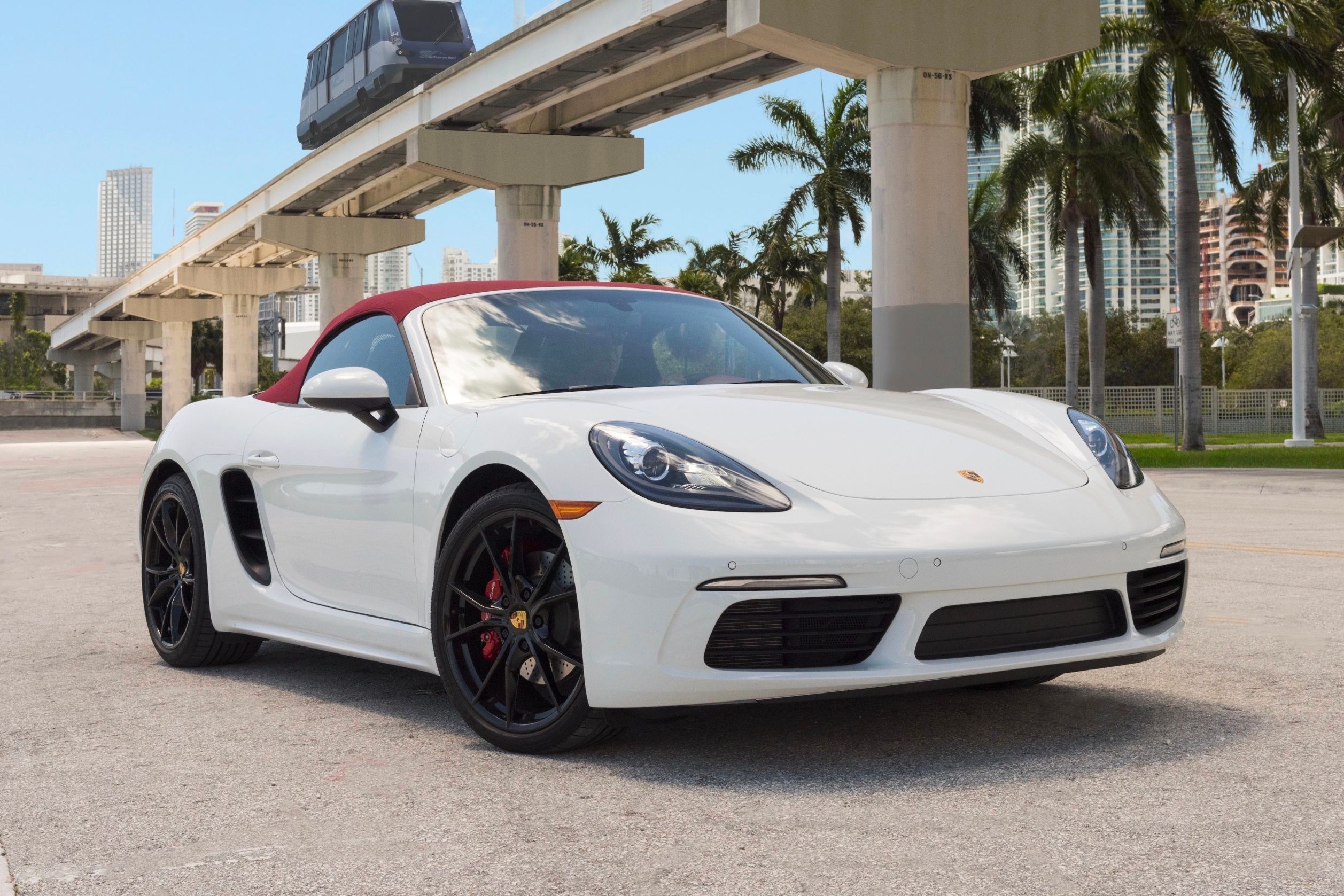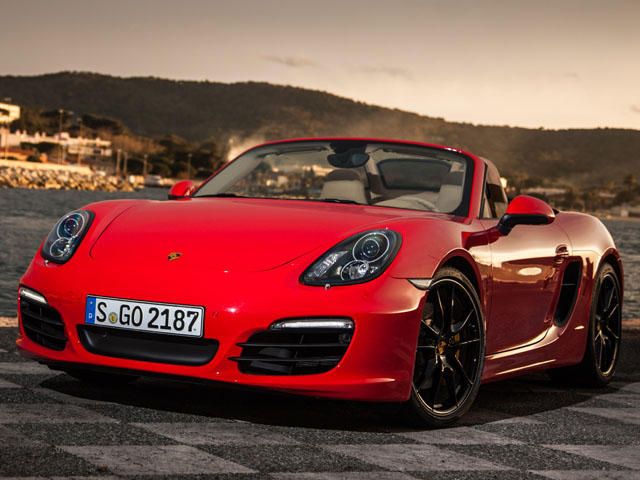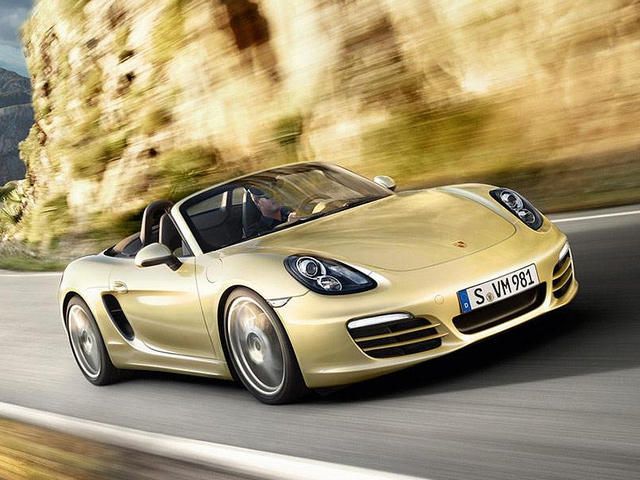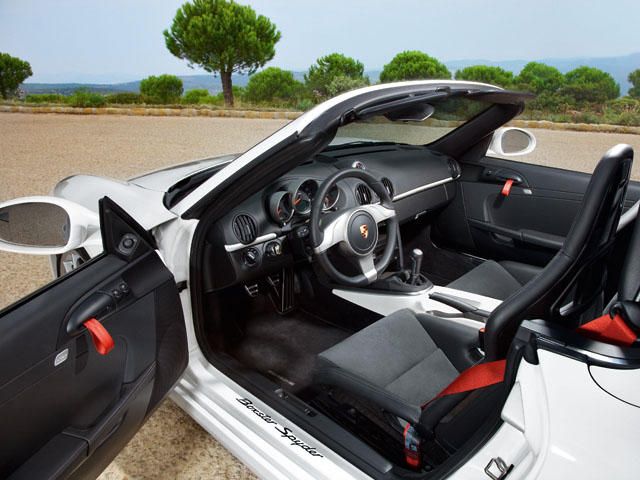
In the last fifteen years, a lot of manufacturers of very expensive and exclusive automobiles have realized the value of something in the lineup that costs a bit less and can sell in volume. To some, this is a sort of blasphemy, soiling the otherwise good name of a brand which used to carry with it much more status. But no matter what your opinion on that subject, it does tend to be good business sense. More often than not, they're actually good cars as well; nobody wants to be known as the brand which built the new Cimarron, after all.
Perhaps the most classic example of this in today's market is the Porsche Boxster, one of the most successful of entry level exotics, and quite possibly the justification used by other exotic brands to build the rest of the cars which you'll see in this series. This was not Porsche's first model to be deliberately positioned below the 911, there had been the 912, the 914, the 924 and the 944, among others. Most of these had been quite successful models themselves, and the 924 was even in production for as long as the Boxster has been now.
But the Boxster will outlive and outsell them all, and that's because the Boxster is the entry-level Porsche which the brand's many rabid fans have made their peace with. It is distinct from the 911, which the 912 certainly was not, but it is still definitely a Porsche. It was conceived as a sort of modern mix of 356 Cabriolet and 550 Spyder, two of Porsche's classics from the Fifties. The design of the original Type 986 Boxster shared several styling cues with the 911, although some might say too many, but this did help with the Boxster's Porsche cred, and was still different enough from the contemporary 996 911 that it was really pretty easy to tell the difference.
The car was an instant success, as it still continues to be, becoming one of the most popular two-seat sports cars on the road. When the Boxster debuted in 1996 as a 1997 model, Porsche was on the brink of financial ruin, and the Boxster is credited with saving the company, although it is the Cayenne which gets the credit for making it rich. The name Boxster is a combination of the words "boxer", for the engine type, and "roadster". It is the first Porsche to be offered first as a roadster since the 550 Spyder in 1953. The engine in the Boxster shares its architecture with the 911's engine, although it has a smaller displacement.
Since the Boxster debuted just before the Type 996 911, this was Porsche's first water-cooled flat-six, and the first water-cooled Porsche not to have its engine in the front. The original car had a 2.5-liter engine which produced 201 horsepower. This grew to 2.7 liters and 217 horsepower for 2000, along with the introduction of the Boxster S and its 3.2-liter, 249 horsepower version of the engine. These power numbers would steadily creep up over the car's lifetime, and the S model would get a displacement bump in 2007 with the second-generation Type 987, bringing it up to 3.4 liters.
The current Type 981 Boxster puts out 267 horsepower and the S puts out 311. Some people, actually quite a lot of people, say that the Boxster in fact handles better than the 911. One would think that a brand as fanatically devoted to model hierarchy as Porsche wouldn't have allowed this to happen, but it is amazingly the case. Really, a mid-engine layout is naturally going to be better balanced than a rear-engine layout, even a rear-engine layout which has been obsessed over for decades. This excellent handling is important. It's a legitimate reason to buy the Boxster, a reason other than not being able to afford a 911.
Porsche option lists being what they are, it's easy to spend quite a bit on a Boxster anyway. A few different special editions of the Boxster have been made, the first of these was the 2004 550 Spyder 50th Anniversary Edition. Since the Boxster has been given the role of the 550's spiritual successor, it is the car which got the commemorative edition. Just 1953 units of the special edition were made, and they were pretty standard Porsche special edition fare. A few bespoke cosmetic touches and a good helping of high-end options were offered as standard. This was followed up by the Boxster Spyder in 2009. This was a different animal.
The lightest Boxster ever, the hard-edged Spyder was stripped-out and more powerful than the S, although it shared the S's 3.4-liter engine displacement. The Type 981 Boxster has been in dealerships only a few months now, but the new car is better than ever, and there are no signs that the continued popularity of the car will wane any time soon. We're looking forward to many more years of Boxsters.



